Grieving Mothers Speak Out On Anniversary Of Iran’s Bloody November
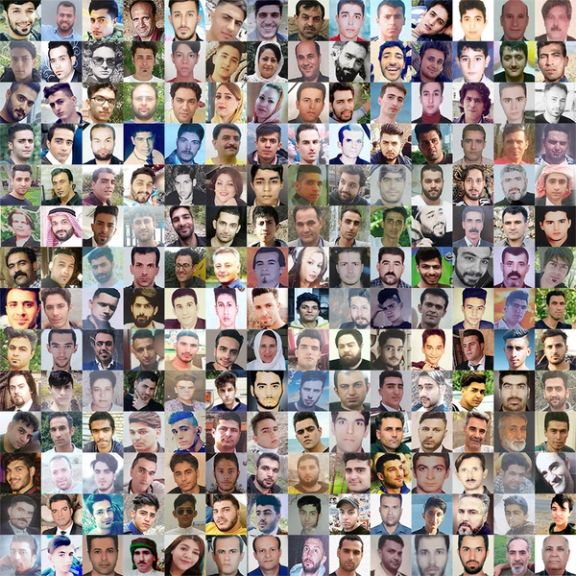
As families of victims and ordinary people mark the 4th anniversary of the brutal crackdown on demonstrations in Iran, a mother of slain protestor has spoken out.

As families of victims and ordinary people mark the 4th anniversary of the brutal crackdown on demonstrations in Iran, a mother of slain protestor has spoken out.
In November 2019, week-long protests began over a sudden fuel price increase. The government shut down the internet and carried out one of the most brutal crackdowns against protesters killing 1,500 people in less than a week.
Mahboubeh Ramezani, the mother of Pezhman Gholipour, an 18-year-old protester who was killed in November 2019 has written with the publication of videos from his funeral.
“I know they killed you with a bullet, yes, my dear, they shot you in the middle of your heart.”
“Two people shot at you, you realized quickly, you understood what injustice is.”
“My Pezhman said stop being a slave and went away so that he wouldn't be enslaved,” said Ramezani.
Mahboubeh Ramezani was arrested in 2022 along with several other relatives of victims of the 2019 crackdown. She was sentenced to 100 lashes in absentia and was held in Iran’s notorious Evin Prison.
The Revolutionary Guard’s paramilitary forces, the Basij, that was deployed to suppress the demonstrations labeled the 2019 protests as "An all-out war against the regime and the Islamic revolution." The regime's response was ruthless massacre, a method it continued to employ in subsequent nationwide protests, including those sparked by public anger with the Morality Police, after the death of 22-year-old Mahsa Amini after her arrest for “improper hijab” in September 2022.

The families of the victims of Flight PS752 which was shut down by the Islamic Revolutionary Guards Corps (IRGC) in January 2020 have demanded justice for those killed by security forces in 2019.
On the anniversary of the November 2019 protests, the association expressed their wish for "the presence of independent and impartial trials in Iran to hold accountable those responsible for the bloody November events."
On Thursday, the association, referring to the killings of over 1,500 people during the protests four years ago, said in a statement that they are "in search of truth and justice" for the victims of these protests.
The exact number of casualties from these crackdowns is not clear, but Reuters, citing "three sources close to Iran’s ruler “Ali Khamenei's circle" and a "fourth official," reported that the Supreme Leader had told senior officials, "Do whatever is necessary to stop" the protests, while also stating that at least 1,500 people were killed during the unrest.
In their statement on Thursday, the Flight PS752 Families Association announced that the burial of the victims of these protests was held under "extraordinary conditions and intense security pressure," stating: "The mourning of many families in November turned into a widespread struggle for justice." The association was formed after a civilian airliner was shot down over Tehran killing 176 people onboard.
The association also mentioned in their statement that some families seeking justice for the victims of the November 2019 protests “are still imprisoned for no reason."
Reports indicate that the families of those killed in the November 2019 gathered at the gravesites of the slain protesters in the cities of Karaj, Rasht, Isfahan, Sanandaj, Qazvin, Tabriz, Mahabad, Langroud, Fouman, and other cities in Iran.

The outspoken leader of Iran's Sunnis, Mowlavi Abdolhamid, has criticized Iranian authorities for not punishing the culprits behind Zahedan’s "Bloody Friday" bloodbath.
Nearly 100 civilians, including women and children, were killed in the Sunni city of Zahedan, the capital of Sistan-Baluchistan province, during the Bloody Friday tragedy on September 30, 2022, when they came out for peaceful anti-government protests.
On the eve of Mowlavi Abdolhamid's weekly Friday sermon, security and law enforcement forces were deployed in some crossings of Sistan-Baluchistan province, human rights sources reported.
Baluch Activists Campaign group published videos of "armored bulletproof military vehicles” on the streets of Zahedan and reported snipers were stationed on a mountain near the city’s main Makki Mosque since Friday morning.
Besides Zahedan, Khash city was also experiencing a strong security and military presence, with armored vehicles deployed in the city to deal with any potential gatherings of citizens.
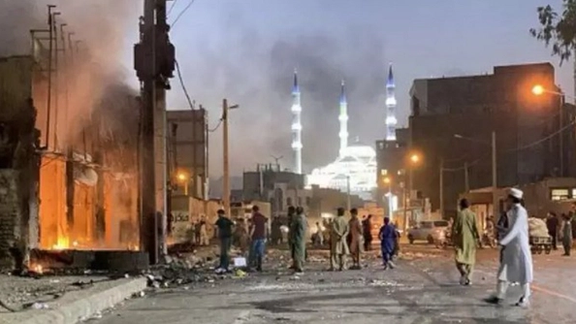
While there has not been a trial for the perpetrators of the killings of protesters, several Baloch protesters accused of attacking security forces and law enforcement have been executed.
“There are reports that some [government agents] go to the families of victims of Bloody Friday and urge them to accept ‘blood money’. The country's customs and current law prohibit this,” said Iran’s top Sunni cleric Mowlavi Abdolhamid.
As per Iran's Islamic Penal Code, a person who has committed murder can avoid the death penalty if the victim's family forgives him. In that case, they may be sentenced to prison and be required to pay "blood money" to the next of kin.
The southeastern province of Sistan-Baluchistan is among the most economically deprived parts of Iran. The province has a large Baluch population, mostly Sunnis. They have historically been among Iran's most persecuted minorities, with the highest execution rate.
“It is surprising that despite the leader's order to punish the perpetrators and leaders of this crime, it has not been followed. Our belief until now was that the leader's orders are valid, and at least those who eat the bread of sovereignty and government will follow it,” Abdolhamid said during his Friday sermon.
“It gives comfort to the families of the martyrs to know that those who committed this crime will be punished,” he continued.
The Bloody Friday protests began with worshippers gathering after a police commander sexually assaulted a young Baluch girl. The uprising became one of the bloodiest days of the uprising following Mahsa Amini's death in morality police custody.
A week-round protest has been taking place in this Sunni-majority city since then, following sermons delivered by the city's Friday prayer leader Mowlavi Abdolhamid.
In his speech on Friday, Mowlavi Abdolhamid once again asked the Islamic Republic to end discrimination and consider "national interests".
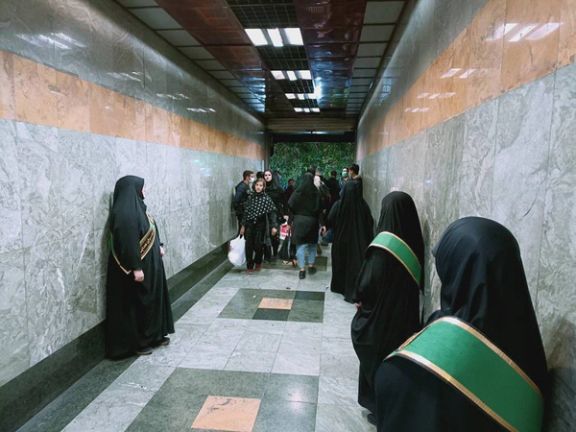
Iranian news websites and social media users report that officers have been deployed in greater numbers and armed with cameras to enforce mandatory hijab in the Tehran’s metro stations.
Numerous hijab officers can be seen crowded into a subway passageway in Tehran's Enghelab station, according to social media images posted Friday. The situation has been described as the "horror tunnel" for women.
The Tehran newspaper Farhikhtegan verified the increased presence of hijab enforcers on Thursday in other busy metro stations.
The newspaper highlighted that the Security Police (FARAJA) was assisting the hijab enforcers by using their cameras to spot and identify women without headscarves.
“There is an increase of FARAJA forces in the subway stations, especially in front of the ticket gates and next to the hijab guards, and when you leave the gate, a young man with a small camera will appear in front of you to take your picture,” Farhikhtegan wrote.
Over the past week, reports on social media have increased about the government's more aggressive attempts to impose and monitor hijab in the subway.
"Recording images of passersby violates people's right to privacy," added Farhikhtegan in its article.
The hijab officers in the subways have become extremely strict after Iranian-Kurdish woman Mahsa Amini, 22, died in hijab police custody in September 2022, sparking the "Women, Life, Freedom" protests.
In May, Tehran mayor Alireza Zakani announced that the city has implemented a uniformed security unit to prevent women from entering the metro ticket gates unveiled.
There was also a report in August that Tehran municipality would send 400 personnel to enforce hijab laws at subway stations in the capital.
The increased presence of hijab police also evokes the memory of Armita Geravand, 16, who in October died after an encounter with Tehran's hijab police.
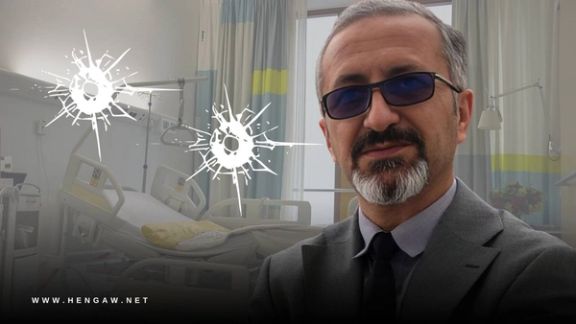
According to reports received by Iran International, Sohrab Rahmati, an Iranian Kurdish lawyer and human rights defender is currently hospitalized under security measures in Erbil.
Informed sources in the Kurdistan region of Iraq told Iran International's reporter that Rahmati was targeted in front of his house in Erbil by a three-member armed team, and he was hit by two bullets. The security forces of the Kurdistan region of Iraq have not yet been able to arrest the attackers and are investigating the incident.
Rahmati has represented several families in recent years whose members were victims of assassinations orchestrated by agents of the Islamic Republic of Iran in the Kurdistan Region.
According to information received by Iran International in previous years, he had been responsible for handling the case of Qadir Qadiri, a senior member of the Kurdistan Democratic Party of Iran, who was assassinated in a village in Sulaymaniyah province by three agents of the Islamic Republic in March 2018.
In an exclusive interview with Iran International in 2020, Rahmati said, "Those accused of Qadiri's assassination have confessed that the Islamic Revolutionary Guard planned the assassination and promised to pay them."
The Kurdistan Democratic Party of Iran condemned the malicious intent towards the life of this lawyer in a statement and announced that Sohrab Rahmati had been responsible for important cases.
The Democratic Party also emphasized that this lawyer has been repeatedly targeted for assassination by the Islamic Republic. In the past 11 months alone, three members of the Kurdistan Democratic Party of Iran have been assassinated in the Kurdistan region of Iraq by the Islamic Republic.
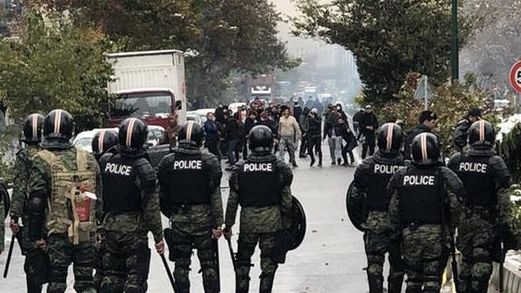
Candles, vigils, sobbing and lamenting mothers, and offerings of traditional food and snacks at cemeteries on colorful tablecloths are common scenes in Iran this week.
Families of victims and ordinary people mark the 4th anniversary of the killing of at least 1,500 mostly young protesters in less than five days in November 2019.
Photos of fallen protesters are circulating widely on social media, with users posting collages of hundreds of images of young men and women who lost their lives in one of Iran's bloodiest crackdowns on dissent under the Islamic rule.
Days of intense nationwide protests, triggered by a sudden government decision to raise fuel prices, started on November 14, 2019, and marked the beginning of prolonged periods of dissent. What made the people angry was not simply a price rise. It was the painful humiliation they felt as the government did not bother to let them know in advance about the hike. In addition, when the media reported about a possible price rise, government officials denied any such plans.
The announcement came at midnight, presumably to minimize public shock. However, the morning revealed an even greater shock, as prices had tripled overnight. Iranians, anticipating a ripple effect on other prices, took to the streets in unprecedented numbers.
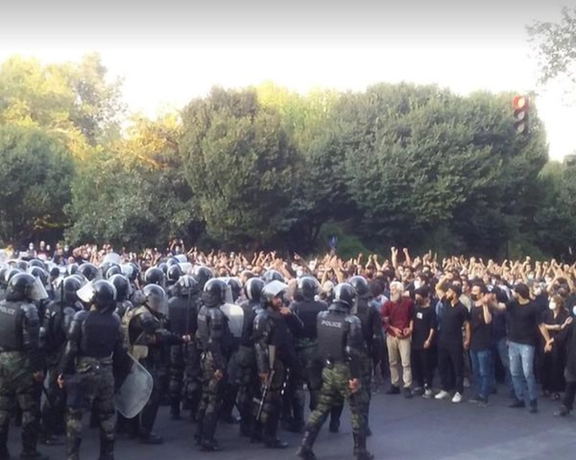
As many, including Iranian journalist Shahed Alvai have observed, "the crackdown was even more unprecedented. Protests took place in 104 Iranian cities in 29 provinces, and they were quickly turned into a massive anti-regime movement. Protesters ruled out reconciliation with the government and took to the streets in a scale that terrified the government."
The Revolutionary Guard’s paramilitary forces, the Basij, that was deployed to suppress the demonstrations labeled the 2019 protests as "An all-out war against the regime and the Islamic revolution." The regime's response was ruthless massacre, a method it continued to employ in subsequent nationwide protests, including those sparked by public anger with the Morality Police, after the death of 22-year-old Mahsa Amini after her arrest for “improper hijab” in September 2022.
During the 2019 protests in the month of Aban on the Iranian calendar (October 22 to November 21), protesters, for the first time, chanted slogans against the entire regime: "We do not want the reformists and conservatives. That is all over!" They were referring to two insider factions ruling Iran for three decades. The government recognized the severity of the threat, leading to a violent crackdown on dissent, and in the words of Iranian dissidents, "Aban continued."
Four years later, references to Aban are abundant. People are still remembering and mourning the fallen protesters who were often shot at point blank range as documented by International human rights organizations. The victims' families are still being harassed by security forces and sometimes imprisoned for several years.
In subsequent protests, the government, mindful of the international backlash to the large number of protester deaths, took pride in claiming fewer casualties in 2022. However, shotguns replaced rifles, resulting in many being wounded or blinded, and a higher number ended up in jail.
What the ruling elite did not learn was addressing the root cause of dissent: Deteriorating economic conditions in 2019 and serious political issues including demands for civil liberties and respect for human rights in 2022. Only after the nationwide protests in 2022 did government officials express a willingness to engage in dialogue with the people. However, once the streets calmed, they abandoned the call for reconciliation, adopting a rude and humiliating tone toward Iranians, particularly women, teachers, university professors, workers, and pensioners, on a daily basis.
Reformist commentator Abbas Abdi reminded the government in a commentary in Etemad newspaper that, during the 2022 protests, they used to be humble and call for dialogue with protesters. However, as soon as they believed the protests were behind them, they returned to their factory settings, speaking arrogantly.
According to Abdi, authorities interviewed 66 scholars, including himself, to understand the events and reasons behind the protests. However, he criticized the government's reluctance, stating, “As far as they are concerned, there was a security problem, and the security forces sorted it out." Abdi acknowledged that "The way the government is handling last year's protests has not changed."
Despite government assertions, numerous social media posts by political activists, often writing under an alias, insist that the Bloody Aban is not over. As Alavi pointed out, "The names, memories, and pictures of Aban 2019 live on as family members of fallen protesters keep them alive. Eyewitnesses are in prisons, and family members have not stopped seeking justice." Mahboubeh Ramezani, the mother of Pejman Gholipour, one of the young men killed in November 2019, has told the government: "You know that Aban has destroyed you and that Aban still goes on."